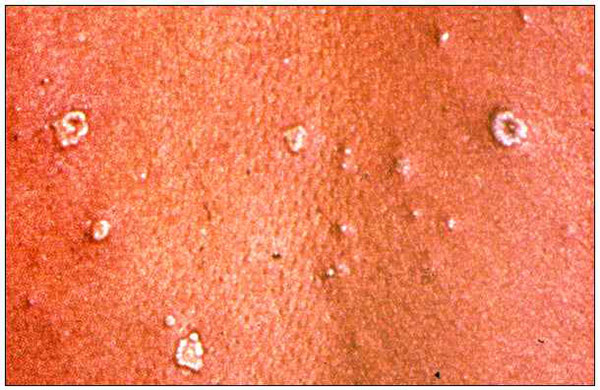Volume 5, Number 4—August 1999
THEME ISSUE
Bioterrorism
Perspective
Smallpox: Clinical and Epidemiologic Features
Figure 2

Figure 2. The lesions of chickenpox develop as a series of "crops" over several days and are very superficial. Papules, vesicles, pustules, and scabs can be seen adjacent to each other. The trunk is usually more affected than the face or extremities.
Page created: December 13, 2010
Page updated: December 13, 2010
Page reviewed: December 13, 2010
The conclusions, findings, and opinions expressed by authors contributing to this journal do not necessarily reflect the official position of the U.S. Department of Health and Human Services, the Public Health Service, the Centers for Disease Control and Prevention, or the authors' affiliated institutions. Use of trade names is for identification only and does not imply endorsement by any of the groups named above.